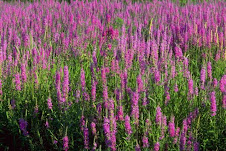This time, I was given the opportunity to participate in a RayGel study during my breast cancer radiation treatments. RayGel is a formulation of reduced glutathione and anthocyanins extracts from various blue/purple flowers and it protects the skin against burning, which is one of the possible side-effects of breast radiation.
 I was given several small tubes of the gel and was instructed to apply it one hour prior to my radiation treatment and again four hours later and to mark the application times on a chart. The physician in charge of the study told me that I wouldn’t know until after the study was completed whether I was given Ray-gel or a placebo.
I was given several small tubes of the gel and was instructed to apply it one hour prior to my radiation treatment and again four hours later and to mark the application times on a chart. The physician in charge of the study told me that I wouldn’t know until after the study was completed whether I was given Ray-gel or a placebo.Each pea-sized amount of gel covered four inches of skin, and it took only four peas to adequately cover my treatment area. I wondered if women with larger breasts were given more tubes of gel.
As it turned out I cheated a little and only applied the RayGel once a day, prior to my treatment and aloe vera gel just before bedtime. It really wasn't convenient for me to apply the RayGel in the afternoons because I always seemed to be away from home in a public place during the time I was supposed to apply it. I needed to look in a mirror while applying the purple stuff to make sure I hit the target and I didn't feel comfortable exposing my nippleless breast in a public restroom. I was told to continue applying it once a day, to see if the gel (or placebo) would still be effective when applied less frequently (sort of a study within a study).
At the end of my radiation treatments, the skin on my right breast looked exactly the same as the left. There was one little area behind my right armpit where I didn’t apply the gel because I didn’t know that the x-ray beam was targeting that area too. Well, that was the only area that was burned and rough-feeling, so I know that I received the real thing.
Click here to find out more about the RayGel clinical trial. If there are no clinical trials in your area, you can purchase it online—although it’s not cheap.
By-the-way, my aunt Ginny is currently undergoing treatment for breast cancer and her left breast is bright red from radiation burns. I gave her some leftover RayGel tubes, but she was reluctant to try it until she consulted with her doctor.
My advice is, if you have access to RayGel, use it because it does work. Why suffer painful burning if you don’t have to, not to mention the fact that radiation itself can cause skin cancer if it burns your skin (the radiologist in charge of the study said).




